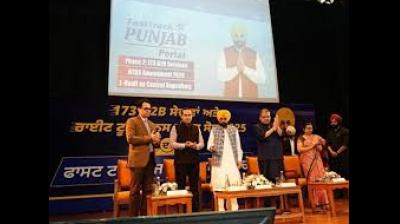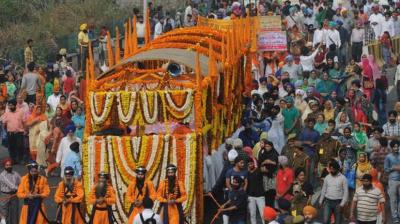
When we are talking about the places to be visit in Punjab, first place comes in our mind is Sri Harminder Sahib in the Amritsar. Sri Harmandir Sahib ("The abode of God"), also known as Sri Darbar Sahib, informally referred to as the Golden Temple, is the holiest Gurdwara of Sikhism, located in the city of Amritsar, Punjab, India. The Harmandir Sahib complex is also home to the Akal Takht (the throne of the timeless one, constituted by the Sixth Guru, Guru Hargobind). While the Harmandir Sahib is regarded as the abode of God's spiritual attribute, the Akal Takht is the seat of God's temporal authority.

Second place is Wagah Border. Wagah is a village situated in Lahore District, Punjab, Pakistan and lies on the old Grand Trunk Road between Lahore, Punjab, Pakistan and Amritsar, India. The border is located 32 kilometres (20 mi) from Amritsar. At the time of independence in 1947, the migrants from the Indian parts of the subcontinent entered the present day Pakistan through this border crossing. On the Indian side the station is known as Attari.

Third pace is Haveli Amritsar. Haveli at Amritsar has raised the already high standards set by the previous Haveli properties by sheer translation of not just the founder’s passion but also the love bestowed upon it over the years by the people of Punjab. Haveli at Amritsar has extended its menu to include the local delicacies of the city – and the city has graciously welcomed, its next big tourist destination.

Fourth place to visit is Virasat-e-Khalsa. It is a museum of Sikhism, located in the holy town, Anandpur Sahib, near Chandigarh, the capital of the state of Punjab. The museum celebrates 500 years of the Sikh history and the 300th anniversary of the birth of Khalsa, based on the scriptures written by the tenth and last human guru, Guru Gobind Singh.

Firfth place to visit is Rock Garden in our city beautiful Chandigarh. The Rock Garden of Chandigarh is a sculpture garden in Chandigarh, India, also known as Nek Chand's Rock Garden after its founder Nek Chand, a government official who started the garden secretly in his spare time in 1957. It is completely built of industrial and home waste and thrown-away items. It is near Sukhna Lake. It consists of man-made interlinked waterfalls and many other sculptures that have been made up of scrap and other kinds of wastes which are placed in walled paths. The garden is visited by over 5,000 people daily and Teej Festival is a festival celebrated with lot of pride by women at Rock Garden Chandigarh.














